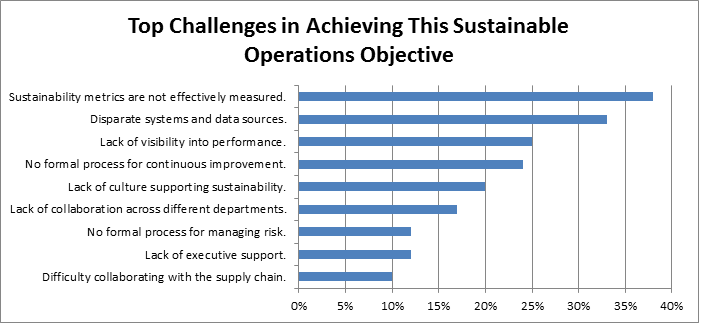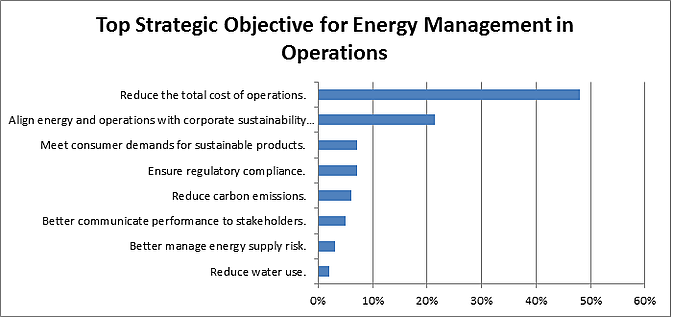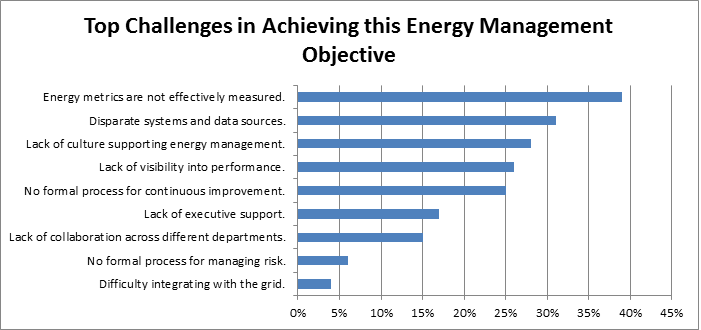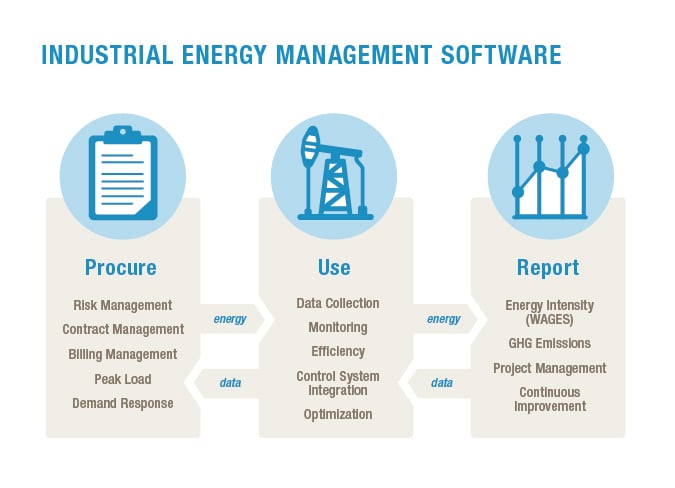 Last month, we launched our inaugural Industrial Energy Management (IEM) survey. In that short period of time, it’s been taken by over 100 executives and leaders in charge of making energy and sustainability-related decisions in their organization. Through the survey responses, we’ve been collecting benchmark data on a number of people, process, technology, and metrics-related questions.
Last month, we launched our inaugural Industrial Energy Management (IEM) survey. In that short period of time, it’s been taken by over 100 executives and leaders in charge of making energy and sustainability-related decisions in their organization. Through the survey responses, we’ve been collecting benchmark data on a number of people, process, technology, and metrics-related questions.
Over the coming months and years, this data will act as the foundation for LNS Research’s IEM practice. Though, there’s no need to wait that long to get a good idea on the emerging sustainability and energy management focus points and hurdles faced by today’s leading executives. In our initial analysis of the data, we’ve already seen some interesting trends pertaining to strategic objectives and challenges.
Sustainable Operations Benchmark Data
LNS Research considers "sustainability" an umbrella term for a number of industrial focus areas, including operational risk management, product stewardship, environment, health, and safety (EH&S), sustainability reporting, and industrial energy management. Recently, we wrote a research paper on the holistic management of this area, which we refer to as Enterprise Sustainability Management (ESM). The initial portion of the survey focuses on this area, drilling down into IEM-specific questions in the later sections.
In one of the first questions of the survey, we asked “What is your company's top strategic objective for sustainability in operations?” Although there was a diverse set of potential answers, focus seemed to be on two key areas: Reducing the total cost of operations (41%) and reducing energy consumption (25%). With pressures to improve the bottom line in virtually all large operations, the financial focus on these two top responses comes with little surprise.

As a follow-up question, we asked “What are your company's top challenges in achieving this sustainable operations objective?” Responses were considerably more diversified, with the top answer being sustainability metrics are not effectively measured (38%) and the second most chosen response around disparate systems and data sources (33%).

Energy Management Benchmark Data
Because we were interested in finding any differences between sustainability and energy management objectives, we asked both questions separately. We asked “What is your company's top strategic objective for energy management in operations?” Similar to the sustainability-related question, the top answer was reducing the total cost of operations (48%). The second most chosen answer was aligning energy and operations with corporate sustainability objectives (21%).

The corresponding challenges in achieving this question were also similar to the sustainability-related results in that they were more diversified as well as focused on energy metrics (39%) and disparate systems and data sources (31%).

What can we Gather from the Early IEM Research Findings?
These early findings generate several good talking points around people, processes, technology, and metrics for sustainability and energy-focused organizations. First, it’s interesting that in both sections the challenges were focused primarily on the inability to effectively measure metrics and disparate systems and data sources. In many respects, these two challenges correspond to one another and are quite technical in nature.
People and process-oriented issues such as continuous improvement programs and executive support, while still relevant, seemed to take a backseat to the more technical aspects of energy management and sustainability. Because there has been significant progress in this space with energy management systems such as ISO 50001, SEP, and ENERGY STAR, many organizations have followed these guidelines to develop robust supporting cultures, energy and sustainability processes, and leadership capabilities.
As it’s difficult to make true progress toward any initiative without actually measuring it, these programs have also heavily supported the use of metrics in operations. Many organizations seem to have a strong cultural and process-oriented foundation, but this data highlights a disconnect in technology capabilities. With many technology implementation decisions being made departmentally rather than globally, the resulting disparate systems that surface over time result in a lack of enterprise visibility.
From our research as well as discussions with top industry executives, a major source of this technological disconnect seems to materialize between plant floor and procurement solutions. Companies are not getting the end-to-end visibility needed to properly analyze energy as it flows through processes. Following the LNS Research IEM Framework can help with this.
The LNS Research Industrial Energy Management Framework
LNS’s IEM Framework focuses on aligning and then optimizing people, processes, and technology to make measureable improvements toward strategic energy and sustainability objectives. Realizing success with this framework is largely dependent on the effective use of technology.
As shown in LNS Research’s IEM Software Model below, technology implementation decisions should consider how energy will flow through the entire organization, not simply just a department or division. Energy procurement has to be connected to use as well as reporting. Only when these different information sources are seamlessly connected can metrics data be consumable enough to make an impactful production decisions.

For a deep dive into the IEM Framework and the critical connection points across people, processes, technology, and metrics, read LNS Research’s Industrial Energy Management Best Practices Guide. The guide provides executives with a comprehensive overview of IEM strategies and technologies.

You might also be interested in:
How Real-time Energy Monitoring Will Impact Production
Enterprise Energy Management for Industrial Companies
4 Reasons Why Industrial Energy Management Software Fails